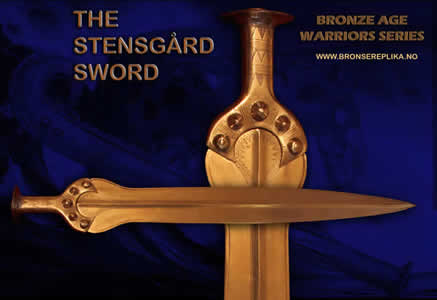 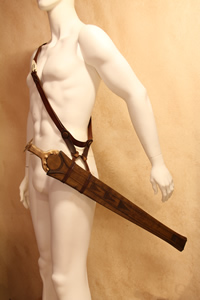 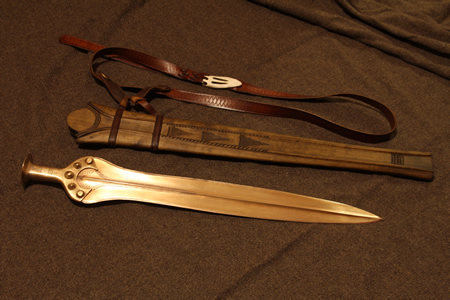
The Stensgård sword
The Stensgård sword, along with the sword from Torupgårde (both from Lolland, Denmark), are the most impressive first generation metal hilted swords in Scandinavia. They are large, long and broad, well made, and lavishly decorated. Almost in every account of the early evolution of the sword, these swords are mentioned. They have always been considered imports to Scandinavia, the production often linked to the Carpathian sword hoards from Hajdusamson and Apa.
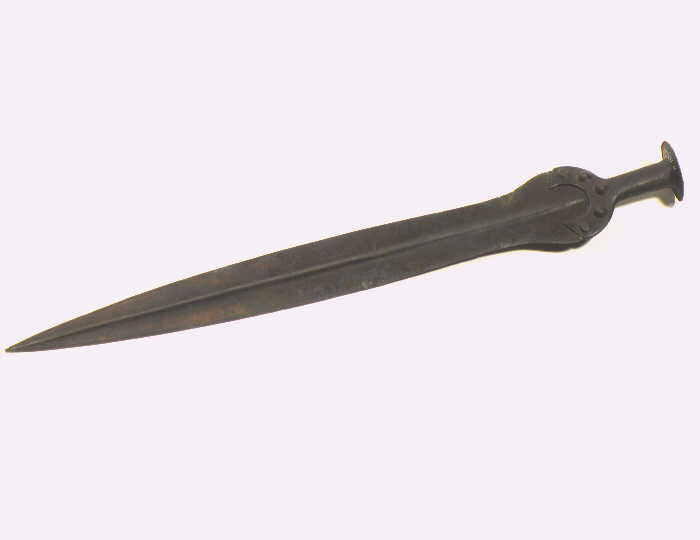 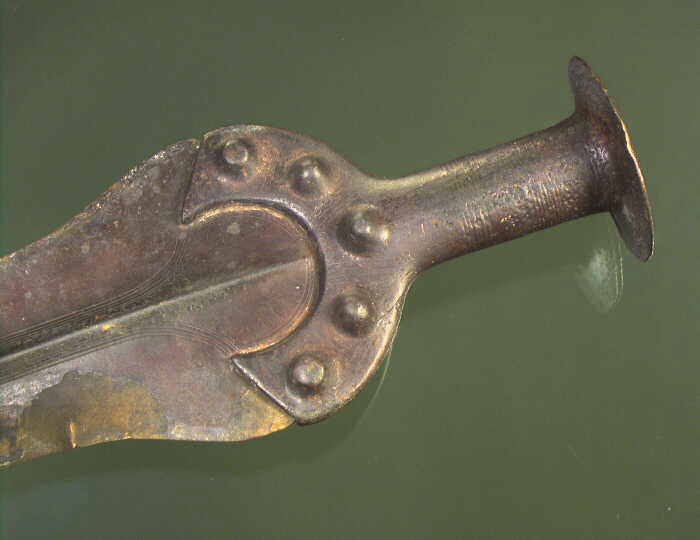
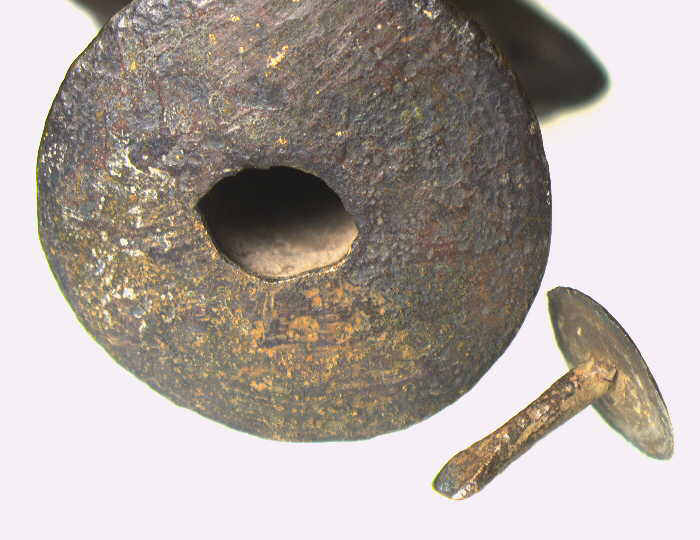
The original Stensgård sword, now at the National Museum in Copenhagen.
We now also have access to the inner parts of the hilt through X-ray:
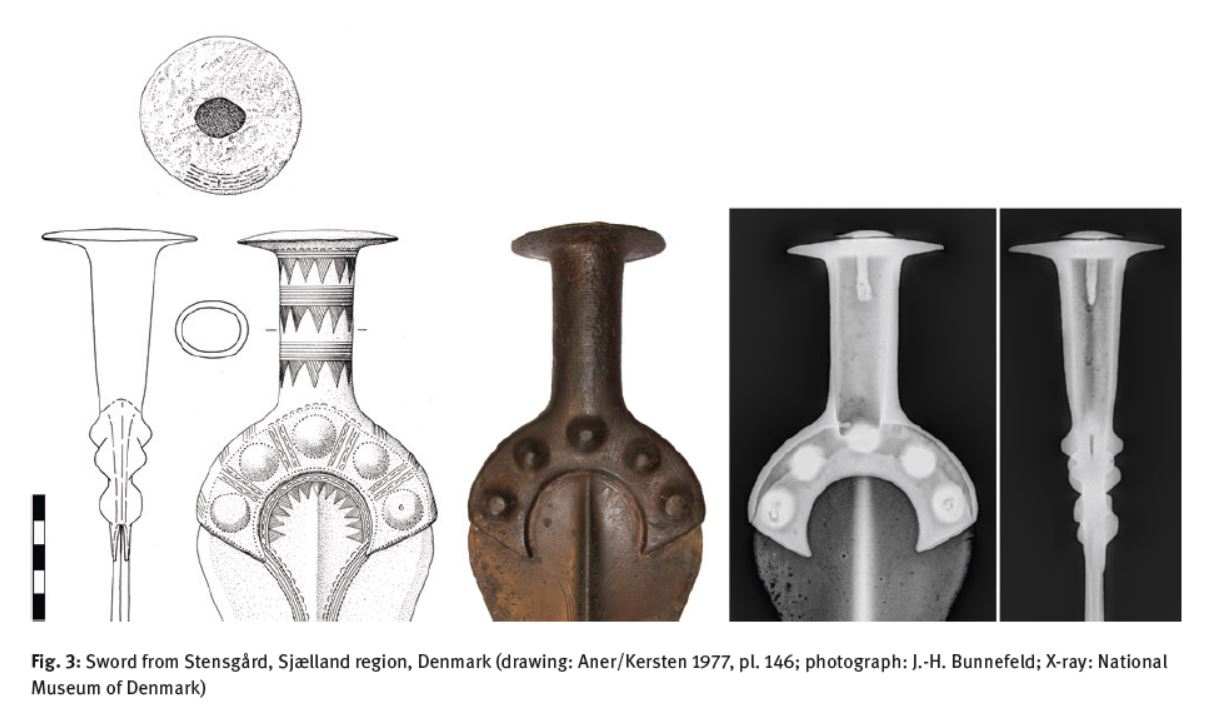
The image is borrowed from J-H. Bunnefeld (2016).
The original hilt is hollow cast with an opening in the pommel, the opening closed off with a large rivet. This might indicate that the opening was central to the method of production - probably a strengthening of the link between core and mould. The hilt is mounted on the blade with two rivets placed in the lower "fake" rivet-heads. The sword weighs 1030grams and have a tin content of 8,5% (blade) and 7,5% (hilt).
The replica is cast with lost-wax method, meaning that the decoration is made on wax templates. The ornaments are thus cast except for minor repairs through engraving on the finished casting.
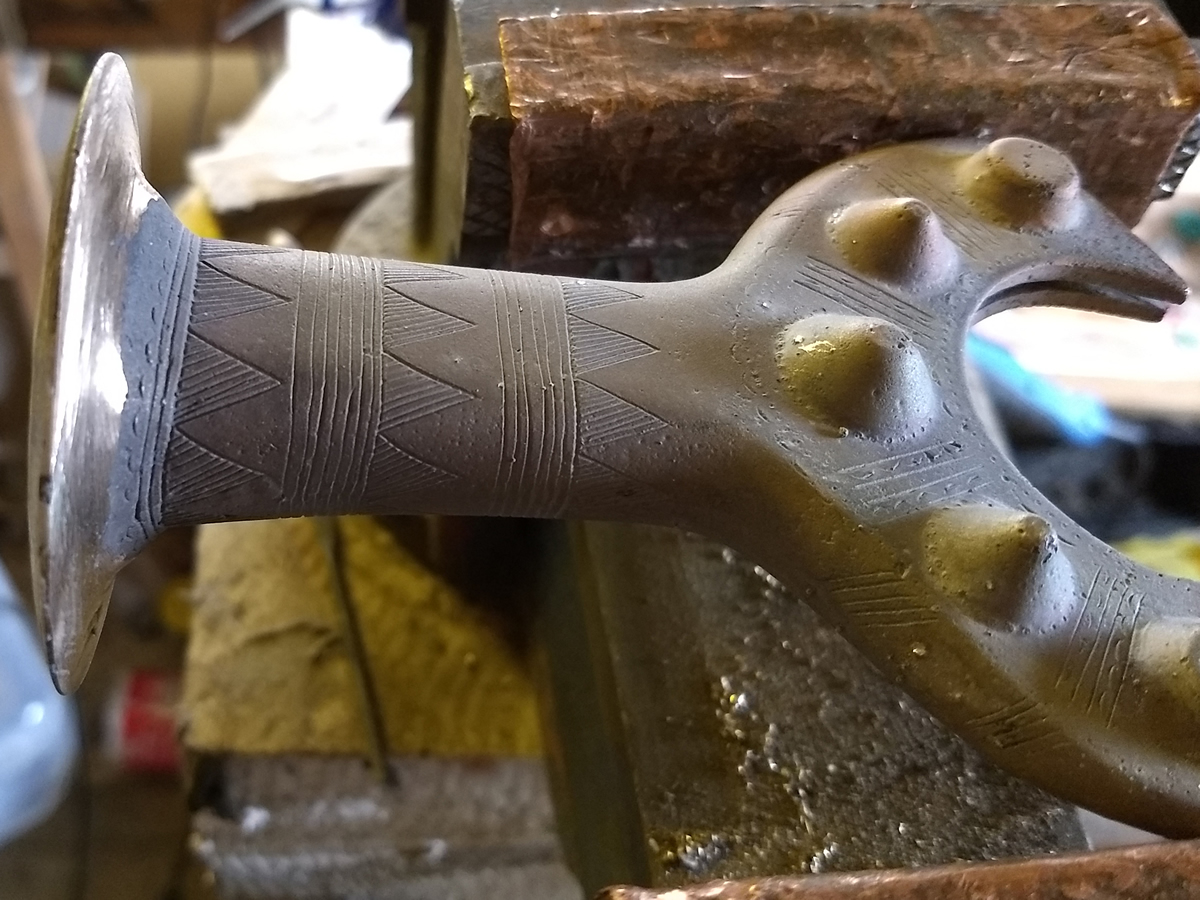
As-cast decoration.
The original seems to have an edge-bevel, probably made through cold-hammering of the edge for hardening. The replica blade has gone through a similar procedure.
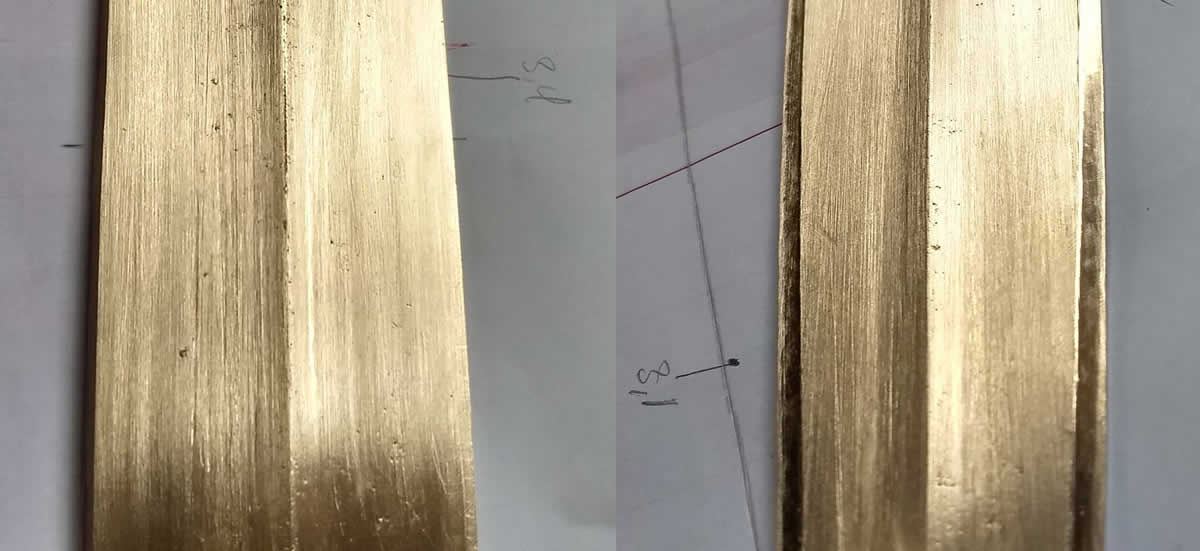
Blade before and after cold-hammering the edges.
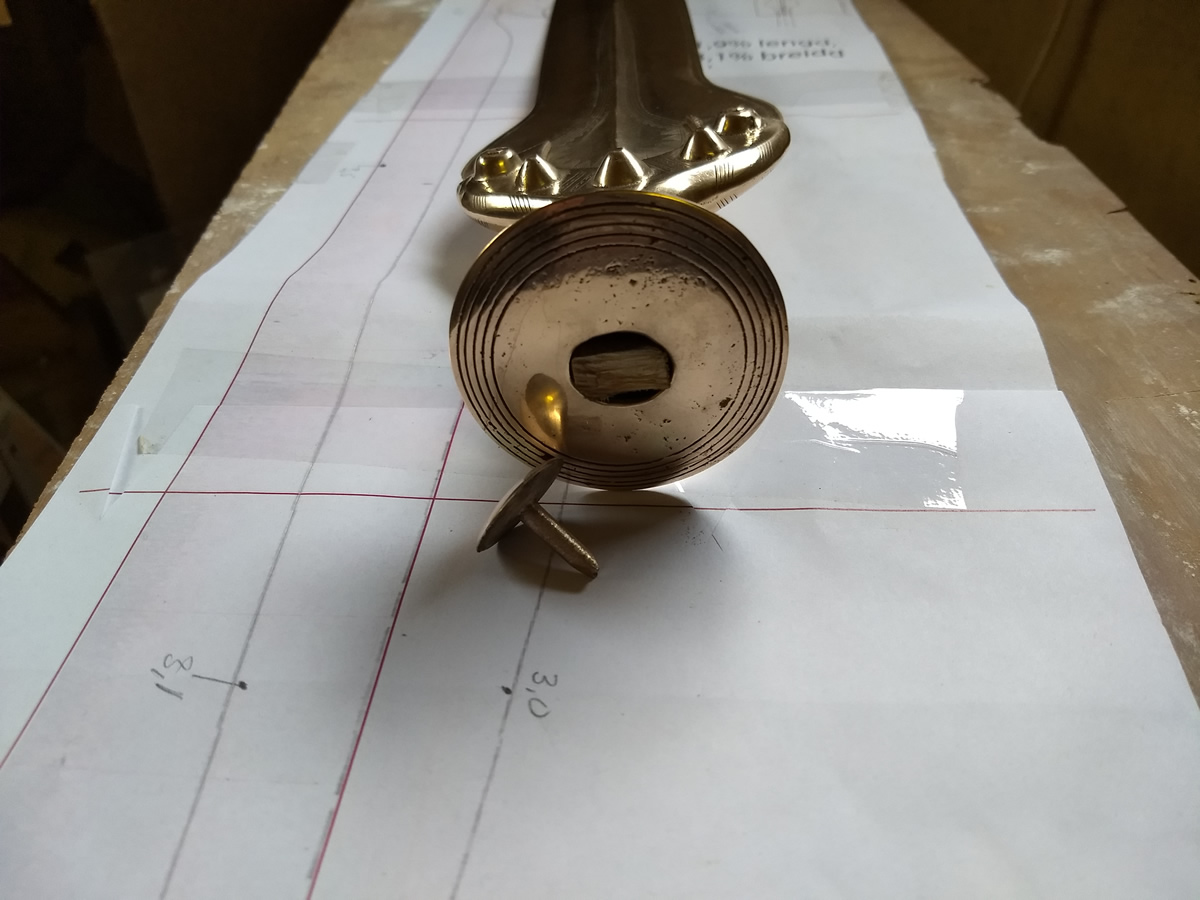
How the top-rivet was fastened on the original we don't know. I have simply forced a piece of wood into the cavity, and then hammered the rivet into the wood. The pitted top surface is a result of vertical casting from the pommel downwards (bits of charcoal and impurities in the metal flowing to the top), and this can also be seen on the original.
The Stensgård sword is a significant piece of sword history and weapon history as well as cultural history.
Literature:
Bunnefeld, J-H. 2016: Crafting Swords. The emergence and production of full-hilted swords in the Early Nordic Bronze Age. Praehistorische Zeitschrift; 2016; 91(2): 379–430.
|